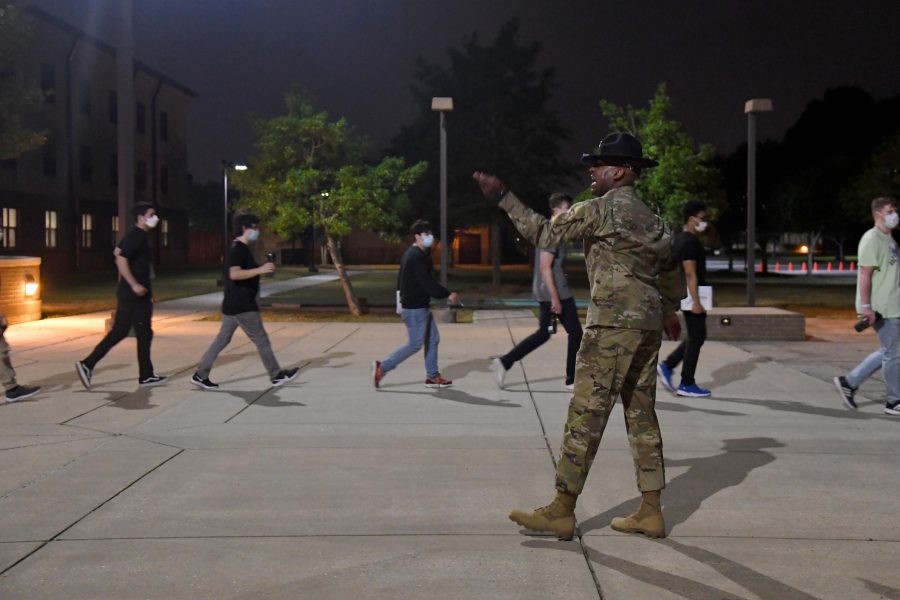The Air Force’s steps to reduce class size in basic military training and put in place distancing measures, to include the two-week restriction of movement once trainees arrive, have limited the outbreak of the new coronavirus, though the impact of these measures will be felt for years.
Air Force Chief of Staff Gen. David Goldfein, in an interview with Air Force Magazine, credited Air Education and Training Command for “thinking creatively” on how to address the COVID-19 situation. This includes the “tent city” at Joint Base San Antonio-Lackland, Texas, for new trainees that fall under the restriction of movement, and opening a second training location at Keesler Air Force Base, Miss.
“In terms of the current plan that we’re operating under, we can actually sustain this for a significant amount of time,” Goldfein said. “And looking at the numbers, I’d have to say right now I’m pretty proud of AETC and what they’ve accomplished.”
There have only been five COVID-19 positive cases among the roughly 6,000 recruits who have entered the training pipeline, so far, said Goldfein.
The changes have led to a large reduction in class size, from about 700 per new class to about 460. This is a change that will have lasting impacts on the service’s end strength.
“There will be some numbers that will, quite frankly, take years to get back because I don’t know, until we have a vaccine, what the backside of this looks like,” Goldfein said. “What we’ll actually return to, I predict, is not a return to normal. It will be a return to a new abnormal, and that will be operating with the virus. And how do we do that? So I do see that this is going to have some longer-term implications.”
Changes related to the coronavirus outbreak are reverberating throughout the Air Force’s training and education systems, beyond just basic training. For example, the Air Force Academy’s class of 2020 is graduating April 18, about six weeks ahead of schedule. Additionally, the other classes moved to distance learning in a process that took about 10 days to set up.
Air University at Maxwell Air Force Base, Ala., has been working with the Air Force Academy to find ways to adopt that model for the next school year, and possibly beyond, Goldfein said.
“Again, living in the new abnormal, how much of this can we return to in terms of the classroom and face to face?” Goldfein said. “How much should we return to that? How much of this can we do through distance learning? There’s always a value to the relationships you make, which are face to face, but this is a new challenge that provides some huge new opportunities.”
